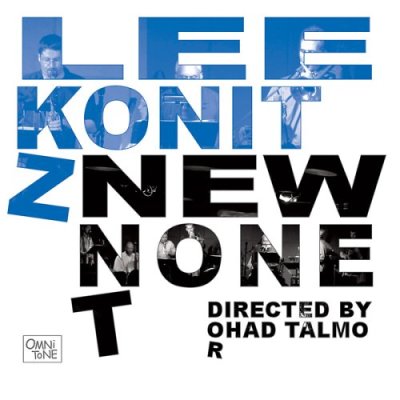Review by Brad Walseth
One of the highlights for me of the 2006 Chicago Jazz Fest was meeting the Artist-in-Residence, jazz legend Lee Konitz, and hearing his New Nonet perform. Having enjoyed hearing Konitz once before at Gerry Mulligan's Rebirth of the Cool concert at Ravinia several years ago, I was anxious to catch this jazz icon live in concert again. And I was rewarded, as the famed alto saxophonist and his group delivered one of the best shows of the festival. The material played by this ensemble was from Konitz's New Nonet album. I have finally gotten my hands on a copy of this recording and am very pleased to discover that the album does justice to the music I enjoyed so much live.
For those unfamiliar with Lee Konitz, many people consider him one of the three greatest saxophone innovators in the history of jazz - along with Charlie Parker and John Coltrane. Konitz, however, steered clear of the intensity of the other two artists, and instead developed his own brand of playing - one in which European and Jewish melodic elements played a major role. This form became known as "cool" jazz - and Konitz was one of the leading players of this style. Influenced by players like Johnny Hodges, Lester Young and Benny Goodman who stressed smoother, more melodic approaches, Konitz played with Lennie Tristano, Stan Kenton and was on Miles; groundbreaking Birth of the Cool sessions. Konitz has continued to play in various configurations since the '40s -recording several well-regarded and influential albums.
Besides playing in Miles' nonet, Konitz recorded with his own nine-piece band in the '70s. Back again with a new nonet arranged and directed by tenor saxophonist Ohad Talmor, this album was recorded during a gig at the in New York City. From the first notes, Konitz is immediately recognizable for his tone and note choices. An early devotee of Johnny Hodges and Lester Young when most were imitating Bird, Konitz absorbed his influences without ignoring the directions taken by modern players like Coltrane, and in doing so developed his own original voice. Perhaps more concerned with specific notes and how they best serve the music than any other saxophonist (Getz would admittedly be in the conversation) his playing still thrills after all these years, and the graceful maturity of his playing should give pause to younger players who think speed and strength are everything.
The cd starts with the "ChromaticLee Suite" of six movements with different names indicating differing styles such as: "Big Easy," "West Coast," "Ominous" and "Funky." These are delightful arrangements and the band plays together wonderfully. The horn section is unusually configured and as such offers some original coloring, and some of the tonalities remind one of the classic Miles nonet, while cellist Goudaroulis adds a nice touch. Meanwhile, the rhythm section of bassist Bob Bowen and innovative young drummer Matt Wilson provide a nice propulsion. Kudos also to guitarist Ben Monder, who shines as well, but it is the legendary saxophonist who catches the attention whenever he solos.
As good as the suite is, this album gets even better. Starting with the moody "Springin'," the band then moves into Konitz's stunning tribute to his musical director - "Ohad," the music bends into intriguing shifts and turns of direction. Monder again provides some shimmering trills, while Konitz's angular melodic lines fascinate with their subtle complexity and utter originality of construction: Konitz sounds like no one else. Russ Johnson's solo is enhanced by drummer Wilson who shows his impressive ability to add detail.
The only non-Kontiz-penned song follows: "Warmer in Heaven" was written by Omar Talmor, and is another success. No other band could create such a rich tapestry of sound, and it is the perfect backdrop for some of Konitz's most lyrical playing. Rather than the thick, heavy in-your-face sound much of today's music seems to promote, this music is light and delicate almost like a Japanese watercolor painting, and it is so refreshing to hear a large ensemble play together so intellgently and so considerately toward the overall harmonic presentation.
Konitz and Talmor collaborated on the writing of "Waltz" which musically creates a bygone era that never existed, or is yet to be(?) in its unpredictable motion between recognizable waltz format and more innovative tangents. Not that this complex music isn't enjoyable - it is truly entrancing, and the finale, "Rubato," provides a satsifying conclusion. As Konitz said to me backstage at Jazz Fest while one young player was wailing and shreiking on stage: "Those aren't real notes." And he was right. As a master of his art and instrument, Konitz knows notes and he knows how to use them to create timeless, mellifluous music.
|

